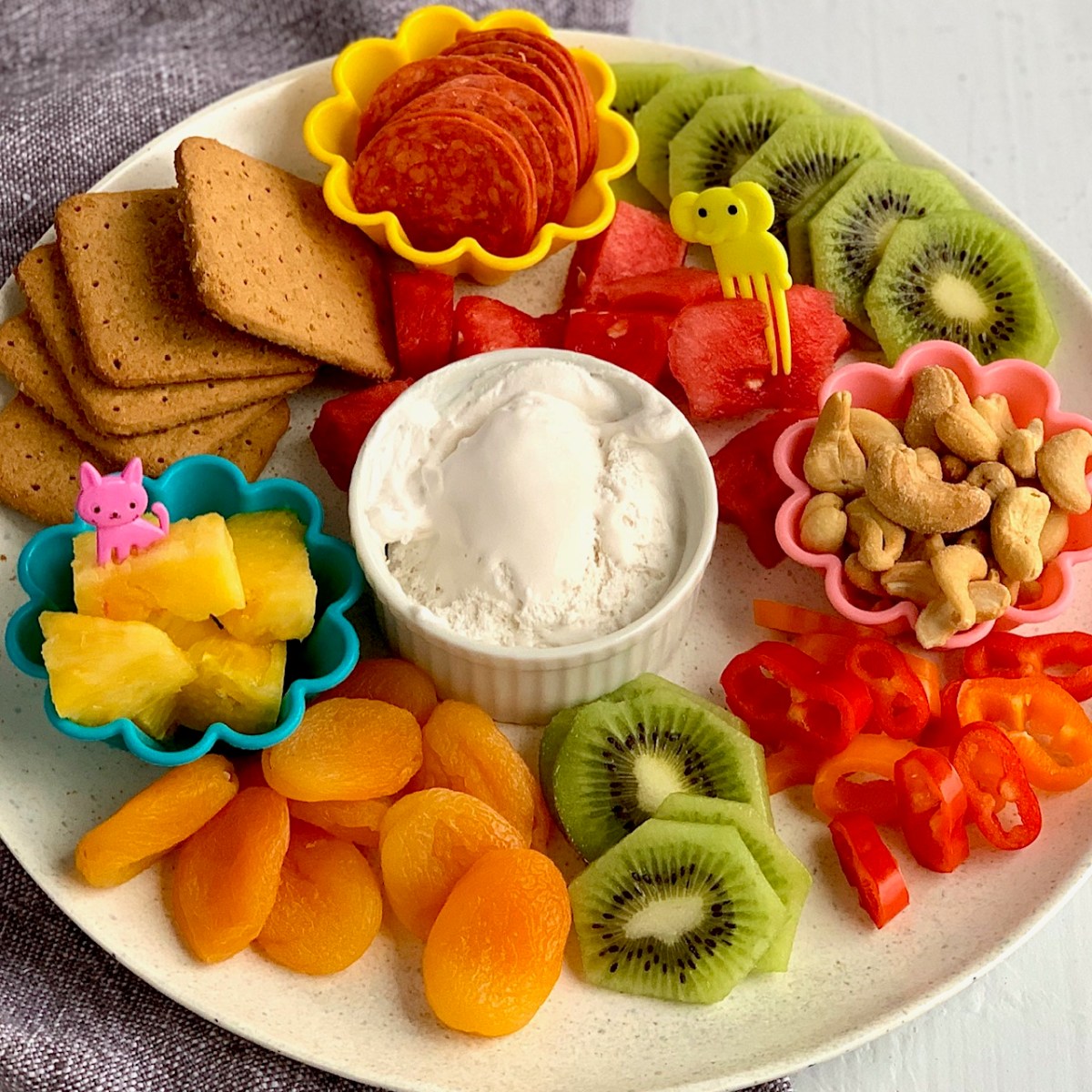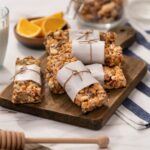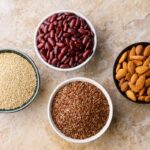Unlock a world of delicious and healthy snacking with our comprehensive guide to soy-free alternatives! Tired of hidden soy in your favorite treats? Discover vibrant, flavorful recipes that cater to various dietary needs, from gluten-free delights to vegan masterpieces. Learn how to effortlessly navigate soy-free eating, whether you’re at home crafting culinary creations or on the go, conquering busy schedules with ease. Prepare to elevate your snack game and savor every bite with confidence.
This guide provides a treasure trove of soy-free snack recipes, practical tips for on-the-go snacking, and crucial information on reading food labels and substituting ingredients. We’ll explore the nutritional benefits of various soy-free options, ensuring you make informed choices that support your overall well-being. Prepare for a journey into a world of flavor and nutrition, free from soy limitations.
Delicious Soy-Free Snack Alternatives
Embarking on a soy-free journey doesn’t mean sacrificing delicious and nutritious snacks. Many flavorful and healthy alternatives exist, catering to various dietary needs and preferences. These recipes offer a delightful blend of taste and nourishment, ensuring you stay energized and satisfied throughout your day.
Soy-Free Snack Recipes
Soy-free snacking opens up a world of culinary possibilities. The following table provides five simple yet satisfying recipes, perfect for a healthy lifestyle. Each recipe highlights the key ingredients, preparation steps, and nutritional benefits.
| Name | Ingredients | Preparation | Nutritional Highlights |
|---|---|---|---|
| Spicy Roasted Chickpeas | 1 can chickpeas (drained and rinsed), 2 tbsp olive oil, 1 tsp paprika, ½ tsp cumin, ½ tsp chili powder, salt and pepper to taste | Preheat oven to 400°F (200°C). Toss chickpeas with olive oil and spices. Spread on a baking sheet and roast for 20-25 minutes, stirring halfway through, until crispy. | High in fiber and protein, good source of iron and manganese. The spices add anti-inflammatory benefits. |
| Avocado & Egg Salad Lettuce Wraps | 1 ripe avocado (mashed), 2 hard-boiled eggs (chopped), ¼ cup chopped red onion, 2 tbsp lime juice, salt and pepper to taste, large lettuce leaves | Combine mashed avocado, chopped eggs, red onion, and lime juice. Season with salt and pepper. Spoon mixture into lettuce leaves and serve. | Excellent source of healthy fats, protein, and fiber. Provides vitamins A, K, and C. |
| Banana “Nice” Cream | 3 frozen bananas (sliced before freezing), 1 tbsp almond butter, ½ tsp vanilla extract | Blend frozen banana slices, almond butter, and vanilla extract in a food processor until smooth and creamy. Serve immediately or freeze for a firmer consistency. | Naturally sweet and creamy, high in potassium and fiber. Provides healthy fats from almond butter. |
| Pumpkin Seed & Sunflower Seed Trail Mix | ½ cup pumpkin seeds, ½ cup sunflower seeds, ¼ cup dried cranberries, ¼ cup chopped almonds, 2 tbsp coconut flakes | Combine all ingredients in a bowl and mix well. | Good source of healthy fats, protein, and fiber. Provides various vitamins and minerals, including magnesium and vitamin E. |
| Sweet Potato & Black Bean Salsa with Baked Tortilla Chips | 1 medium sweet potato (diced and roasted), 1 can black beans (rinsed and drained), ½ red onion (finely chopped), ½ cup chopped cilantro, 2 tbsp lime juice, salt and pepper to taste, corn tortillas (cut into triangles and baked until crispy) | Roast sweet potato until tender. Combine roasted sweet potato, black beans, red onion, cilantro, and lime juice. Season with salt and pepper. Serve with baked tortilla chips. | High in fiber, protein, and vitamins A and C. Provides complex carbohydrates for sustained energy. |
Visual Descriptions of Snacks
The visual appeal of a snack can significantly enhance the eating experience. Below are descriptions of the textures and appearances of three of the recipes.
Image 1: Spicy Roasted Chickpeas: This image showcases a vibrant array of golden-brown chickpeas scattered across a rustic wooden surface. Each chickpea is visibly crisp, with slightly cracked edges hinting at their satisfying crunch. The overall color palette is warm and inviting, with flecks of paprika adding a touch of reddish-orange to the scene. The chickpeas are unevenly scattered, creating a sense of casual abundance.
Image 2: Avocado & Egg Salad Lettuce Wraps: The image features a close-up of a lettuce cup brimming with a creamy avocado and egg salad. The pale green avocado contrasts beautifully with the speckled yellow of the hard-boiled eggs and the vibrant purple-red of the finely diced red onion. The texture appears smooth and creamy, with visible flecks of egg white and onion adding a touch of visual interest. The lettuce cup itself is crisp and fresh, providing a textural counterpoint to the soft filling.
Image 3: Banana “Nice” Cream: This image depicts a scoop of banana “nice” cream served in a small bowl. The cream is a pale, creamy yellow, with a smooth and almost gelato-like texture. The color is uniform, suggesting a perfectly blended consistency. A few swirls of the mixture are visible, indicating a light and airy texture. The overall presentation is simple yet elegant, emphasizing the natural beauty of the dessert.
Understanding Soy-Free Diets and Snacking

Embarking on a soy-free lifestyle requires careful consideration of dietary choices, particularly when it comes to snacking. Understanding the reasons behind soy avoidance and learning how to navigate food labels and adapt recipes are crucial for maintaining a healthy and enjoyable diet.
Soy-free diets are often adopted due to various factors, primarily allergies and intolerances. Soy allergy is a genuine immune response, triggering symptoms ranging from mild skin reactions to severe anaphylaxis. Soy intolerance, on the other hand, involves digestive discomfort such as bloating, gas, or diarrhea after consuming soy products. Beyond allergies and intolerances, some individuals may choose a soy-free diet for personal reasons, such as ethical concerns regarding soy production or a preference for avoiding genetically modified organisms (GMOs), which are common in commercially grown soy. Others might follow a soy-free diet as part of a broader elimination diet to identify potential food sensitivities.
Common Soy-Containing Ingredients
It’s vital to be aware of the many forms soy can take in processed foods. Many seemingly innocuous ingredients actually contain soy derivatives, potentially triggering reactions in those following a soy-free diet. Careful label reading is essential.
Hidden soy ingredients are often found in unexpected places, making diligent label reading paramount for individuals avoiding soy. Always check the full ingredient list, not just the front of the package.
- Soy flour: A common ingredient in baked goods and processed foods.
- Soy lecithin: Used as an emulsifier in many processed foods, including chocolate, baked goods, and margarine.
- Soy protein isolate: Often added to protein bars, meat substitutes, and other processed foods to boost protein content.
- Soy protein concentrate: Similar to soy protein isolate, used as a protein source in various foods.
- Soy oil: A common cooking oil, also used in many processed foods.
- Soy sauce (tamari is a soy-free alternative): A ubiquitous condiment, used in many Asian dishes and sauces.
- Hydrolyzed vegetable protein (HVP): Often contains soy protein and may be found in soups, sauces, and processed meats.
- Textured vegetable protein (TVP): A meat substitute often made from soy.
- Monosodium glutamate (MSG): While not always derived from soy, some varieties are.
- Various soy-based emulsifiers, stabilizers, and thickeners: These can be hidden under various technical names on ingredient lists.
Substituting Soy-Based Ingredients
Replacing soy in recipes requires thoughtful consideration of both taste and texture. The best substitute will depend on the specific soy ingredient being replaced and the recipe itself.
Recipe: Soy-Free Chocolate Chip Cookies
This recipe demonstrates how to substitute soy lecithin, a common emulsifier found in many baked goods. Soy lecithin is often used to improve the texture and prevent separation in recipes. In this case, we will use sunflower lecithin as a suitable alternative.
Ingredients:
* 1 cup (2 sticks) unsalted butter, softened
* ¾ cup granulated sugar
* ¾ cup packed brown sugar
* 2 teaspoons pure vanilla extract
* 2 large eggs
* 2 ¼ cups all-purpose flour
* 1 teaspoon baking soda
* 1 teaspoon salt
* 2 cups semi-sweet chocolate chips
* 1 tablespoon sunflower lecithin
Instructions:
1. Preheat oven to 375°F (190°C). Line baking sheets with parchment paper.
2. Cream together butter and sugars: In a large bowl, cream together the softened butter, granulated sugar, and brown sugar until light and fluffy.
3. Add eggs and vanilla: Beat in the eggs one at a time, then stir in the vanilla.
4. Combine dry ingredients: In a separate bowl, whisk together the flour, baking soda, and salt.
5. Gradually add dry ingredients to wet ingredients: Gradually add the dry ingredients to the wet ingredients, mixing until just combined. Do not overmix.
6. Stir in chocolate chips and sunflower lecithin: Stir in the chocolate chips and sunflower lecithin.
7. Scoop onto baking sheets: Drop by rounded tablespoons onto the prepared baking sheets.
8. Bake for 9-11 minutes: Bake for 9-11 minutes, or until the edges are golden brown.
9. Cool on baking sheets: Let the cookies cool on the baking sheets for a few minutes before transferring them to a wire rack to cool completely.
Embarking on a soy-free snacking adventure doesn’t mean sacrificing taste or convenience. From quick and easy portable snacks to creative recipes that will tantalize your taste buds, this guide has equipped you with the knowledge and inspiration to make healthy, delicious, and soy-free choices. Remember to always read labels carefully and embrace the flexibility of adapting recipes to your unique preferences. Enjoy the journey of exploring a world of flavorful and fulfilling soy-free snacks!
Question & Answer Hub
What are the most common hidden sources of soy in processed foods?
Soy lecithin, soy protein isolate, soy flour, hydrolyzed vegetable protein (often contains soy), and textured vegetable protein are common hidden soy sources.
Can I freeze soy-free snacks for later use?
Many soy-free snacks freeze well. Consider freezing individual portions for easy grab-and-go options. Check the specific recipe for freezing guidelines.
Are all soy-free snacks automatically healthy?
No, while soy-free, some snacks can be high in sugar, unhealthy fats, or sodium. Always check the nutritional information.
What are some good soy-free substitutes for soy sauce?
Coconut aminos, tamari (if gluten-free is not a concern), and Worcestershire sauce (check for soy) are popular alternatives.


